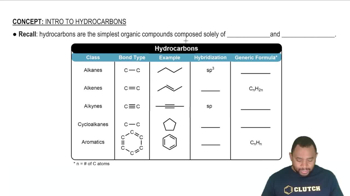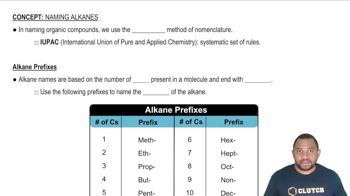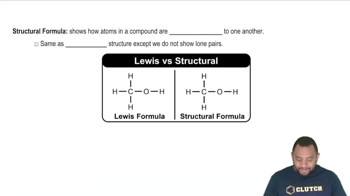Here are the essential concepts you must grasp in order to answer the question correctly.
Hydrocarbons
Hydrocarbons are organic compounds consisting entirely of hydrogen and carbon atoms. They can be classified into aliphatic (straight or branched chains) and aromatic (ring structures) hydrocarbons. Understanding the structure of hydrocarbons is essential for deriving their names and formulas, as the arrangement of carbon atoms determines the type of hydrocarbon and its properties.
Recommended video:
IUPAC Nomenclature
The International Union of Pure and Applied Chemistry (IUPAC) nomenclature provides a systematic method for naming chemical compounds. For hydrocarbons, the name reflects the number of carbon atoms and the type of bonds present (single, double, or triple). Familiarity with IUPAC rules allows one to convert between the structural formula and the corresponding name of a hydrocarbon.
Recommended video:
Structural Formulas
A structural formula represents the arrangement of atoms within a molecule, showing how the atoms are bonded together. In hydrocarbons, structural formulas can be written in various forms, such as condensed or expanded, to illustrate the connectivity of carbon and hydrogen atoms. Recognizing structural formulas is crucial for identifying the correct name or formula of a hydrocarbon.
Recommended video:

 Verified step by step guidance
Verified step by step guidance

